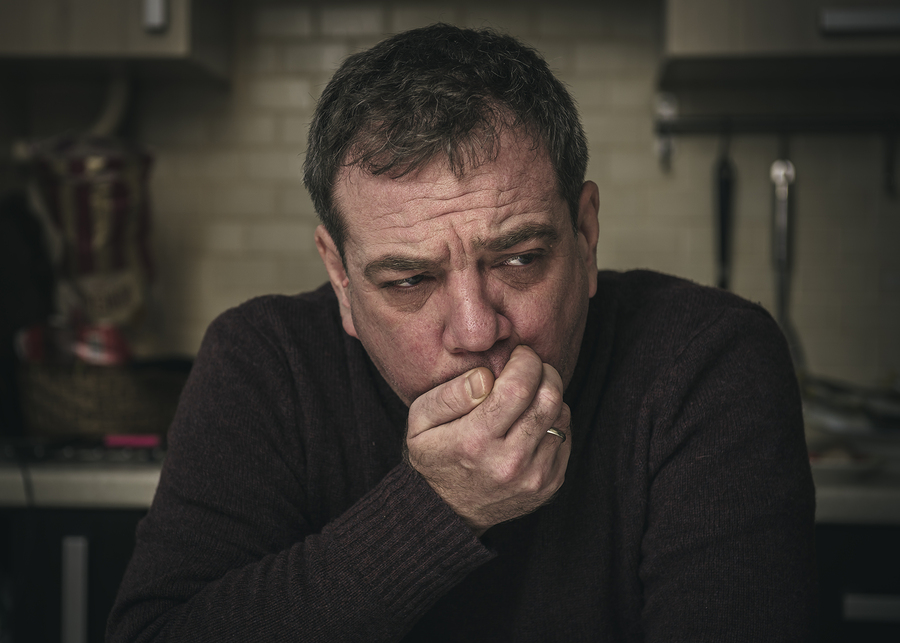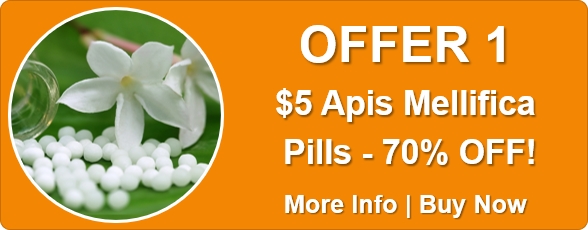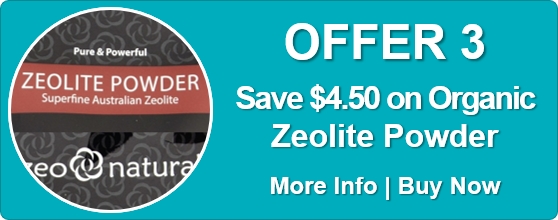Remedies for Barking Coughs

There are many different types of cough and you can hear them all during winter – tickly coughs, dry coughs, chesty coughs, croupy coughs – but they all have one thing in common; they cause distress and discomfort to the sufferer (not to mention the listener!) They lead to irritability, sore muscles, and lack of sleep.
The correct homeopathic remedy, however, can bring rapid relief. It can also resolve the underlying cause of the cough.
To understand more about coughs this article will explore:
- Why we cough
- Two types of cough: wet and dry,
- Self-help measures and home remedies to safely stop a cough,
- Cough medicines and their unwanted side effects,
- Homeopathy and coughs – what’s the research?
- Treating that cough: information on nineteen homeopathic remedies you can choose from at home to take the bite out of that bark.
Reasons for Coughs
Unpleasant though they are, coughs have a purpose. They protect our lungs from unwanted particles, infection, and the build-up of secretions that would otherwise lead to pneumonia. They also act as a warning signal for several serious diseases. Coughs can be:
- Triggered by allergies or inhaled irritants such as smoke and dust,
- Associated with asthma, heart failure or oesophageal reflux,
- A symptom of complaints such as bronchiectasis and cystic fibrosis,
- A nervous habit during times of anxiety,
- The result of a post nasal drip irritating the throat,
- An infection by the whooping cough bacterium
- A side-effect from blood pressure medication or anti-inflammatories such as aspirin and other non-steroidal anti-inflammatory drugs (NSAIDs)
Most often though, coughs are part and parcel of the common cold. [REDACTED], the remainder of this article will focus on the common cough, how to soothe it, and how to get rid of it.
Wet or Dry?
Dry coughs are unproductive and irritating. They’re usually triggered by an annoying tickle and expel little or no mucus.
On the other hand, wet coughs are productive. They remove congestion by expelling secretions that collect in your throat or chest.
Either cough can be triggered by cold air, movement, talking, change of temperature, or laughing. Expectorant may be clear, coloured, stringy, frothy or tacky. Such characteristics are important to note when choosing a homeopathic remedy as different coughs will need different remedies. The reason for this will become obvious later when we look at some of the remedies homeopaths use to treat coughs.
Treating Your Cough
There are several options for dealing with a cough. We will start with the simplest and safest, and then work through to those that carry a greater risk. To finish, we will look at research on the homeopathic treatment of coughs and examine nineteen homeopathic remedies that you can use at home.
Practical Advice
- Eat healthy food and avoid sugar or sugary foods which suppress the immune system for up to 5 hours after being eaten.[1]
- Get plenty of rest so your body can recover
- Maintain hydration and keep your mucus membranes moist with frequent drinks of water or soothing teas.
- Soothe inflamed airways and loosen mucus with steam inhalations and warm showers.
- Avoid cigarettes and tobacco smoke which paralyse and eventually destroy the microscopic hairs that line your airways. These fine hairs, called cilia, normally sweep the mucus upwards in waves, away from your lungs.
Home Remedies
Most home remedies for coughs are the same as those used for the common cold. To read the common cold tips that also help coughs, visit: ‘The Common Cold – Ways to Send it Packing.’
A specific tip for coughs involves black pepper. Pepper has an antimicrobial effect but in truth, its ability to soothe coughs probably has more to do with the homeopathic effect of ‘like treats like’; pepper can induce coughing in a healthy person and so will relieve it in someone suffering from a cough. Pepper is best added to raw honey and taken by the spoonful several times a day.
Good News for Chocoholics
Chocolate can help a cough! Theobromine, a compound found in the cocoa bean, will suppress coughs just as effectively as many cough medicines but without their side-effects. Milk chocolate contains very little theobromine compared to dark chocolate. To obtain an effective dose you need to eat 50 – 100g of dark chocolate. Enjoy!
The Allopathic Approach – Conventional Treatment
Conventional cough medicines usually rely on the allopathic effect [2] for their treatment (an interesting exception to this general rule occurs with two of the cough medicines that will be discussed a little further in the article.) Allopathic treatment uses suppression or palliation to relieve symptoms for short periods of time. The drawback is that in the long run, continual suppression leads to worsening health.
Depending on whether the cough is wet or dry, conventional medicine will offer a suppressant or an expectorant. Indications and side-effects are listed below.
Cough Suppressants
Suppressants such as for pholcodine and dextromethorphan (and their related brand names) are used to suppress the cough reflex of dry coughs when there is no congestion or mucus to expel.
Dextromethorphan can cause allergic reactions such as: hives, difficulty in breathing, and swelling of the face, lips, tongue, or throat. Urgent help should be sought if any of these occur.
Other listed side effects include: severe dizziness, anxiety, restless feeling, or nervousness; confusion, hallucinations; and slow, shallow breathing. Some people also experience an upset stomach.
Pholcodine products can cause: dizziness; drowsiness; excitability; poor coordination; breathing difficulties and gastrointestinal disturbances such as nausea or vomiting – especially if large doses are used.
Expectorants and mucolytics
Expectorants such as senega, ammonia, bromhexine, and guaiphenesin, and their related brand names, are used by conventional medicine to break up the mucus so it can be expelled easily.
Senega and ammonia, interestingly, are homeopathic [3] medicines – something of which most conventional prescribers are unaware. Both substances when tested on the healthy produced symptoms of thick tenacious mucous and troubling coughs – the very symptoms they can treat. The only difference between their homeopathic and conventional use is that homeopaths prescribe them in potentised [4] form to avoid chemical side effects – something unable to be done if prescribed in their conventional form.
Bromhexine and guaiphenesin are prescribed allopathically. They can produce allergic reactions in the sensitive, as well as the side effects of: nausea; vomiting; headaches; rashes; diarrhoea; drowsiness; stomach pain; vertigo (dizziness); and sweating – especially if taken in large doses. Caution should also be used with these medicines if you already suffer from gastric ulcers, and liver or renal impairment.
Save the Children!
When it first became known that children were being admitted to hospital and dying from over-the-counter cold and cough medicines, enquiries revealed that these products were useless for their intended purpose and contained dangerous medicines.
In 2008, the Australian Therapeutic Goods Administration (TGA) decided that over-the-counter cough and cold medicines should not be given to children younger than 2 years of age. Drug regulating bodies in other countries such as Canada said they should only be given to children 6 years and older.
Pharmaceutical companies now place warnings about these products on their labels but because they did not have to be recalled, old merchandise is still sitting on the shelves of stores and being sold. Beware.
Remember, don’t give these medicines to children under 2 years of age. For children 2 years or older, still take care. Instructions issued by the TGA now state:
- Do not exceed the recommended dose, frequency of dosing or duration of use.
- Only use the medicine measure supplied with the medicine rather than a kitchen spoon so the right amount is given.
- Do not give other medicines containing similar ingredients at the same time.
Homeopathy and Research
One interesting study [5] with seriously ill patients on respirators in an intensive care unit showed that homeopathy not only effectively reduced their respiratory secretions but also helped them come off their respirators more quickly. The length of time they spent in the unit was also shorter and without respiratory complications.
In contrast, those in the control group who had not received homeopathic treatment took considerably longer to recover. Some also had to be returned to the respirator after extubation because they were struggling to breath from excessive secretions in their airways – something that was not a problem for the homeopathic group. As excess respiratory secretions are a major trigger for coughs, the homeopathic treatment would also have reduced the incidence of coughs – something that is also substantiated clinically.
Another study [6] of children with upper respiratory tract infections, including coughs, showed that those who received homeopathic treatment recovered much more quickly than those who were treated conventionally in the control group.
A third study [7] showed that those children whose colds (and accompanying coughs) were treated with homoeopathy were more likely to feel and do better than those children whose colds had been treated conventionally. The homeopathically treated children had fewer complications, and their parents took significantly less sick-leave than the parents of those children treated with antibiotics.
Treating Coughs with Homeopathy
Treating yourself with homoeopathy for simple acute problems is easy as long as you know how to choose the remedy that matches your symptoms. Troublesome coughs that follow a cold are a good way to practice and become familiar with homeopathy. Unless you prefer to, there is no need for you to see a homoeopath first, and all remedies are safe for use with babies through to the elderly when used according to instructions.
To treat your cough, look through the remedies listed below to see which one matches your symptoms – then just take it. Instructions on how to dose, and how often, can be found here . If there is no improvement by 3-4 doses just reassess your symptoms and choose another remedy.
Should you find it difficult to identify and sort through your symptoms, ABC Homeopathy has an online remedy finder that will make it easier for you. Alternately, an appointment can be made with a homeopath who will try to get to the bottom of things for you.
Homeopathic Remedies for the Common Cough
Many of the following remedies are found in home-use kits.
Aconite napellus (Acon.)
The sudden onset of a cough after exposure to a dry cold wind or from getting chilled. There is a suffocative feeling with a constant, short, dry cough and chest. Aconite is for the early stages of croup and croup coughs, and also night-time coughs, accompanied by shortness of breath and agitation. In the case of croup, Aconite may need to be followed by Hepar-sulph as the symptoms develop.
Antimonium tartaricum (Ant-t.)
A rattling, choking, chesty cough with negligible expectoration and where the patient has to sit up in order to breathe. The patient sounds like they are drowning in mucus and there are suffocative paroxysms of coughing, with sweat (see Ipecac)
Arsenicum album (Ars.)
An asthmatic cough with wheezing and frothy expectoration. There is burning expectoration or sensation, with constricted airways, making breathing difficult. The patient is very chilly, restless, anxious and may be sweaty, with marked exhaustion. The patient feels worse after midnight and is sensitive to cold.
Belladonna (Bell.)
A short, dry tickling cough, with sudden onset and worse at night. The cough lubricates the throat a little, but it dries out again and causes sudden violent spasms of coughing. There is tickling, burning or a scraped sensation in the throat. Belladonna symptoms are aggressive and can include high temperatures with a flushed face, staring eyes, swollen glands and red or inflamed membranes.
Bryonia alba (Bry.)
A hard dry cough with soreness in the chest, where the patient clutches at their chest to ease the stitching pains caused by coughing. Bryonia symptoms are clearly better for hard pressure and keeping still. All symptoms are accompanied by dryness and are worse for any motion (including eating or drinking). Warm air aggravates and entering a room can trigger a bout of coughing. The patient wants to take a deep breath and sigh, but this is too painful and they are irritable, thirsty and want to be left alone. The cough may be caused by exposure to cold dry winds and builds up slowly over a few days. Always wants to lie on the painful side.
Calcarea carbonica (Calc.)
Tickling cough, dry at night and loose in the morning with easy expectoration. Cough aggravated by various activities like eating or playing. Will suit the chubby, sweaty Calc-carb type of patient.
Drosera (Dros.)
[REDACTED]. Spasmodic cough ending in retching and even vomiting. Cough from deep in the chest forcing the patient to clutch their abdomen on coughing. A choking cough with bouts following each other so rapidly that it is difficult to breathe. Cough is triggered by tickling in the throat and wakes patient from sleep. Worse lying down, after midnight, after getting warm in bed (see Ip, Ant-t).
Ferrum phosphoricum (Ferr-p.)
The early stage of a respiratory infection, or colds which head rapidly for the chest and ear resulting in bronchitis or otitis. A very common remedy in children’s coughs which start with a fever and flushed face, followed by a short painful tickling cough with soreness over the sternum. Blood-streaked sputum or nosebleeds may be reported. Also covers croupy coughs.
Hepar sulphuricum (Hepar.)
Croup from cold, dry winds or cold air. Cough is triggered by any part of the body being exposed. Choking spells of coughing. The Hepar patient is very sensitive to cold air, or cold in any form, and is especially irritably, although they are much better for warmth or humid weather. This is an important croup remedy in children.
Ignatia amara (Ign.)
Dry, hacking, spasmodic cough, where the more the patient coughs, the more the irritation. [REDACTED] (see Dros). They are unable to take a full breath and sigh frequently.
Ipecacuahna (Ip.)
Suffocative coughs, [REDACTED], coughs with choking or gagging (compare Antim tart, Drosera). Cough incessant and violent with each breath. Stiff and blue in the face with choking cough. Rattling cough with very little expectoration. Coughs accompanied by nausea or nosebleed. Wheezing coughs that recur annually.
Kali bichromicum (Kali-bi.)
A barking, hacking cough with rales of white sticky or ropy mucus, the consistency of egg-white, and hoarseness. A croupy cough with tickling in the throat and accumulation of tough mucus. It may be triggered by undressing.
Lycopodium clavatum (Lyc.)
A tickling cough, with shortness of breath and fan-like motion of nostrils at each intake. Tickling cough accompanied a throbbing headache with each bout of coughing.
Nux vomica (Nux.)
A dry teasing cough with a sore chest, where colds usually settle. An immobile, feverish patient who is very sensitive to being uncovered. There is a spasmodic cough, with retching, which causes a headache and a bruised sensation around the navel. The patient is oversensitive, irritable and is worse in cold, dry, windy weather.
Phosphorus (Phos.)
An exhausting and violent, dry and tickling cough with irritation deep in the throat. The cough may be triggered by laughing, talking or by a change in temperature, e.g. going out or coming in. There is a bursting pain in the head, a tight painful chest and pain may spread to abdomen. The patient may clutch their head, chest or abdomen on coughing. They can’t lie on their left side and are usually anxious, seek reassurance and feel chilly, but want cold drinks.
Pulsatilla pratensis (Puls.)
This is a gagging, choking cough that comes and goes. It is dry at night and loose in the morning, worse and night and on lying down, causing the patient to sit up or use extra pillows. The chest feels sore, they can’t lie on their left side and there may be spurts of urine passed with coughing. The cough is triggered by coming into a warm room or by breathing in. This patient needs reassurance or sympathy and a child will be weepy and clingy. Fresh air helps, while a closed room aggravates symptoms.
Rhus toxicodendron (Rhus-t.)
A dry teasing cough from tickling in the chest, which is triggered by uncovering the smallest part, even a hand. It is a dry, night cough with a bloody taste, although no blood is seen. The patient must move about as it is worse at rest and from cold, wet weather.
Sepia (Sep.)
A violent cough with thick, yellow expectoration, with retching and gagging, that is worse on rising. The expectoration is only at night or only in the morning and the patient is tired and indifferent.
Sulphur (Sulph.)
A strong desire for fresh air accompanies this suffocative cough which is worse at night with the rush of blood to head and chest. There is a burning feeling on the face and chest, with red lips and eyelids. The patient feels worse after a bath and has burning feet which are stuck out of the end of the bed.
Many of the above remedies can be found in home-use kits.
Notes and References
[1] Sanchez, A., et al. Role of Sugars in Human Neutrophilic Phagocytosis, American Journal of Clinical Nutrition. Nov 1973;261:1180_1184. Bernstein, J., al. Depression of Lymphocyte Transformation Following Oral Glucose Ingestion. American Journal of Clinical Nutrition.1997;30:613
[2] Allopathy is the treatment of disease with medicines that produce totally unrelated symptoms to those of the disease when tested on the healthy. This approach can palliate or suppress the health problems but never cures them. The allopathic approach is frequently associated with unpleasant or harmful side-effects. Long term suppression leads to worsening health.
[3] Homeopathy is the treatment of disease with medicines (remedies) that produce similar symptoms when tested on the healthy. This approach ‘cancels out’ the disease symptoms and stimulates a self-healing response from the person’s own vitality. Homeopathic treatment improves rather than weakens that vitality so that full healing is more likely.To learn more about homeopathy visit Tutorials.
[4] To better understand how homeopathic remedies are prepared and the potentisation process, read the Potentisation tutorial (and the Three Scales of Potency and Benefits of Potentisation tutorials).
[5] Frass, M, Dielacher, C, Linkesch, M, Endler, C, Muchitsch, I, Schuster, E, Kaye, A.. Influence of potassium dichromate on tracheal secretions in critically ill patients, Chest, March, 2005.
[6] Steinsbekk, A, Fønnebø, V, Lewith, G, and Bentzen, N. Homeopathic care for the prevention of upper respiratory tract infections in children: A pragmatic, randomised, controlled trial comparing individualised homeopathic care and waiting-list controls. Complementary Therapies in Medicine, Volume 13, Issue 4 , December 2005, Pages 231-238.
[7] Trichard, M, Chaufferin, Nicoloyannis, N., Pharmacoeconomic Comparison Between Homeopathic and Antibiotic Treatment Strategies in Recurrent Acute Rhinopharyngitis in Children, Homeopathy (2005)94, 3-9.







